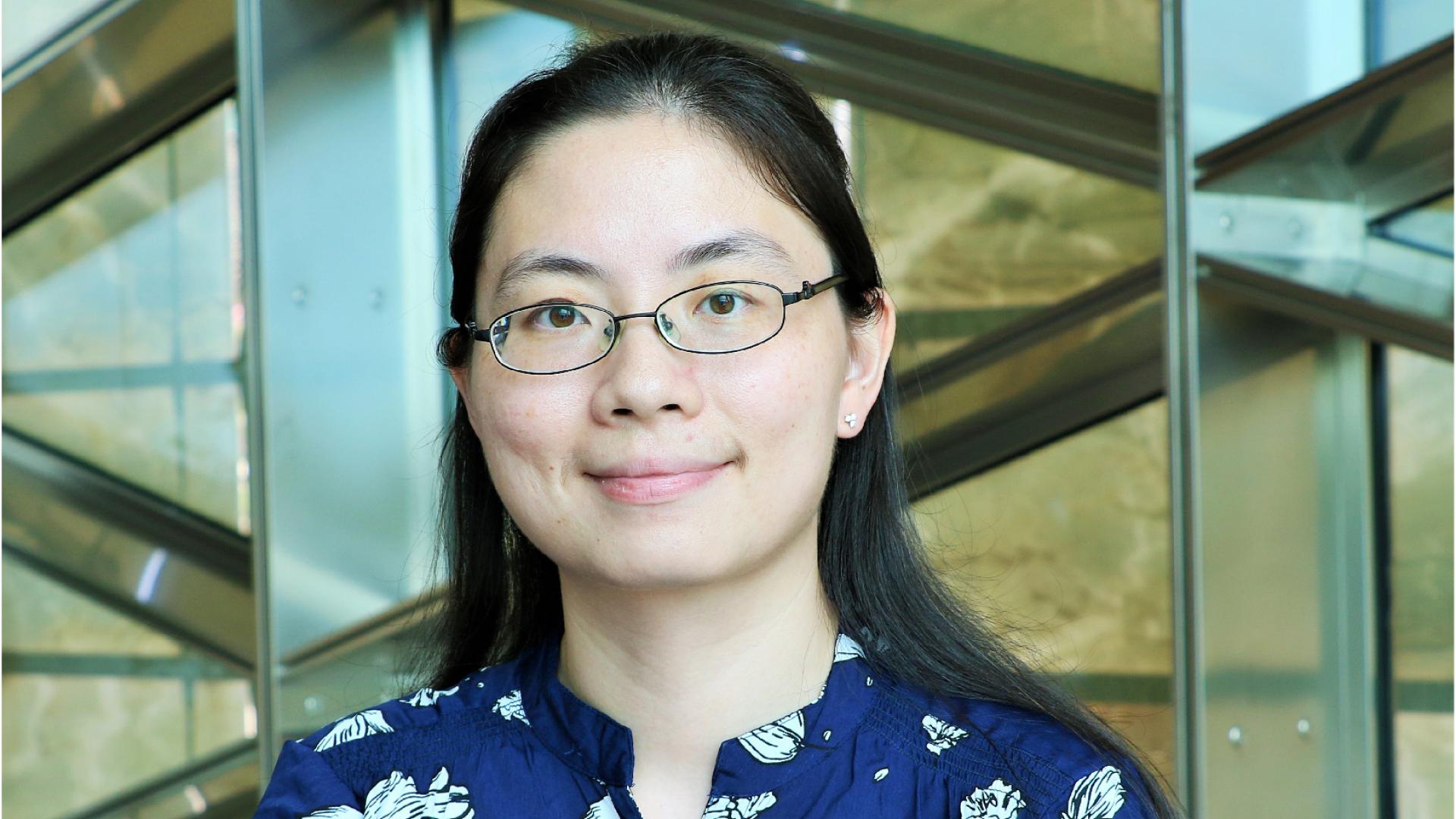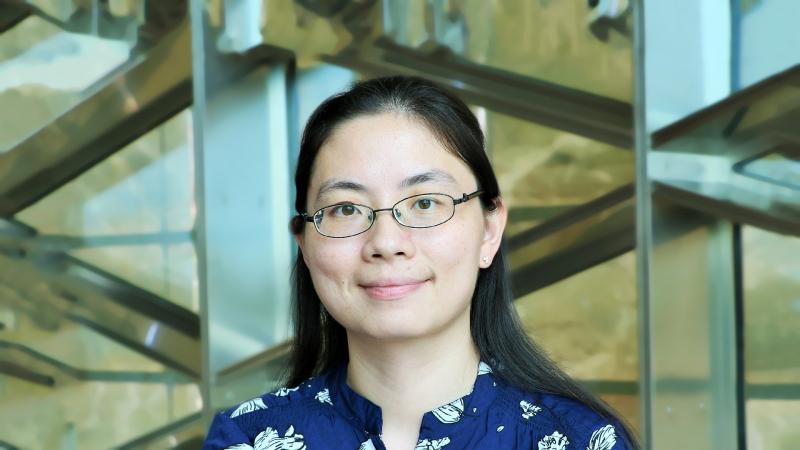Prof. Ying Wu received the 2017 Phononics Young Investigator Award as the Phononics community gathered in Changsha, China, for the 4th International Conference on Phononic Crystal/Metamaterials, Phonon Transport/Coupling, and Topological Phononics, on June 4-9 2017.
"Phononics is a very hot research topic right now," commented Ying Wu when she heard of her nomination for the award "and many smart people are working in this field at the moment." Last year, the Nobel Prize in physics was awarded to David J. Thouless, F. Duncan M. Haldane and J. Michael Kosterlitz for theoretical discoveries of topological phase transitions and topological phase of matter. "These three scientists gave an important contribution to the understanding of the topological phases," Wu said, "part of my work is actually based on their research: we have translated some of their general ideas into acoustics."
Phononics is a branch of classical mechanics studying waves of different nature, such as electromagnetic (light), acoustic (sound) and elastic waves, and their propagation dynamics in solid and liquid. Like electrons and photons, phonons are another type of everyday physical particle representing mechanical vibration and are responsible for the transmission of sound and heat. Phononics is a branch of physics concerned with phonons. Basically, the phononics community cares about sound propagation, mechanical vibrations, and heat transfer.
"Actually, wave equations do not specifically distinguish among wave types," Wu clarified "but when we look at real-world applications we need to be specific on what kind of wave we are dealing with". For her Ph.D. at the Hong Kong University of Science and Technology (HKUST), Wu developed a theory for the homogenization of electromagnetic waves propagation in metamaterials and then extended the theory to the acoustic waves leveraging on the mathematical similarities between them.
"One of our goals of studying the mechanics of wave propagation is producing a metamaterial - an artificial material having some interesting properties," continued Wu "Remember Harry Potter's cloak of invisibility? Today we can theoretically devise such a material. We are developing the mathematical model of a surface able to interfere with the propagation of the optical waves, making the person wearing such a theoretical fabric, invisible to the eye." Despite the method is fully working on paper, applications for invisibility purposes are still not there, as most of the research carried out so far is theory-based."
The theoretical modeling of the macroscopic properties of these extraordinary metamaterials is also called Effective Medium Theory (EMT). The concept of metamaterial sprang to life 1967 when, for the first time, a Russian scientist - Victor Veselago - theorized the existence of a body having unnatural optical properties in the way it was refracting light. After conception, the seed idea took almost 33 years before the first metamaterial was actually created in a lab.
"The metamaterials in existence today are composite materials arranged in a smaller-than-the-wavelength repetitive pattern - a sort of lattice - able to influence the wave propagation dynamics. The desired behavior is given both by the different components and their geometrical patterns. Not all the materials can do the trick," explained Wu.
Applications are numerous from sound insulation to energy saving materials. "The new idea for saving energy is a composite material made of an insulator at the bulk, and a conductor at the surface," continued Wu "Interestingly, a wave propagating along a metamaterial surface does not get scattered even when coming across an imperfection, a defect caused by impurities on the surface of the object. It's like if, in the sea, waves would go around rocks instead of crashing onto them. This is why we say that the surface of a topological insulator is a backscattering immune system. The straight propagation behavior of the wave is protected by the symmetry of the system, making metamaterials the possible winner in the race for low-energy-loss devices."
PRESENT ACHIEVEMENTS AND FUTURE PLANS
Ying Wu has been recently promoted to Associate Professor in Applied Mathematics and Computational Science of the Computer, Electrical and Mathematical Science and Engineering Division of KAUST. She is also the director of the Waves in Complex Media Research Group, at KAUST.
"At KAUST I have my research group and we work at the modeling and simulation of wave propagations in complex media, where we design new elastic and acoustic metamaterials theoretically," Wu explains "For example one of my students proposed a series of different designs of phononic crystals, and after analyzing their topological properties, he was able to find some back scattering immune behaviors in some of them. But again, the results are theoretical and we need to test this hypothesis."
During her time at KAUST, Ying WU has built also some international collaboration: she is collaborating with several experimental groups in China and USA. One of her collaborative work with the University of Mississippi just got published as an express letter in the Journal of Acoustic Society of America, one of the reference journals in acoustics. With the Massachusetts Institute of Technology, the University of California at Berkley and the University of Pennsylvania she designed and proposed a new research project that received the KAUST CRG (Competitive Research Grant) in Fall 2016. For the future, Prof. WU is planning to extend her research approach "I would like to gradually extend my experimental activities. Until now within KAUST I've been collaborating with Prof. Xixiang Zhang in Material Science who can fabricate some proof-of-concept samples of the metamaterials we design, but in the future, I hope to be able to establish a laboratory and work at some acoustics experiments autonomously."
THE FUTURE IS PHONONICS
Phononics seems to offer a lot to students interested in pursuing an academic career and Professor Ying Wu had already led several of them to success. "All of my students have publications in very good journals. One Ph.D. student received the best student paper award during the annual meeting of the American Society of Mechanical Engineers for her work on the Semi-Dirac point in acoustic systems. Later, she was selected to participate in the 66th Lindau Nobel Laureate meeting," said Wu proudly "Students and postdocs are the ones who carry out the real work. I'm extremely gratified by having such hard-working people in my group and I appreciate their daily contribution to our research."
When asked about what kind of students and researchers she is looking for, Professor Wu replied: "My ideal students should have a robust background in mathematics, partial differential equations and wave equations, of course. But also a sound knowledge of Eigenvalue problems, boundary conditions, and they need to have some basic background in physics because it helps interpret the mathematics equations and the physical meaning they are having. They shouldn't also be afraid of coding and use MATLAB, or - what most of my students are currently using - COMSOL Multiphysics®. In brief, they should not be afraid of doing computational stuff."

